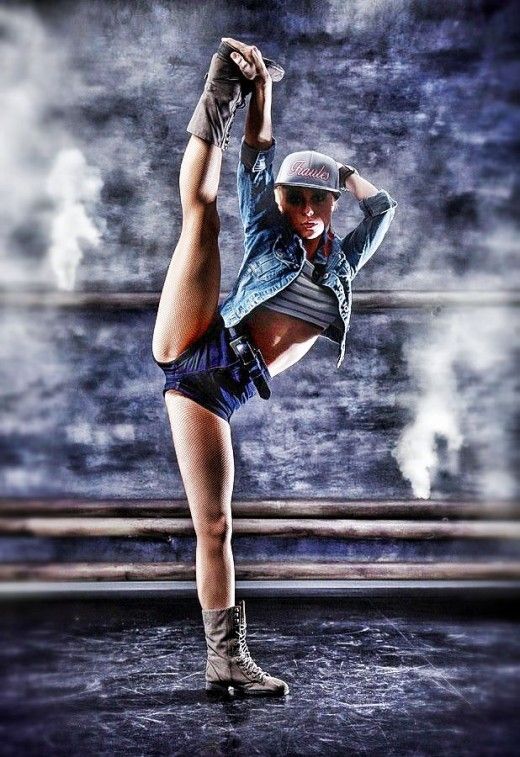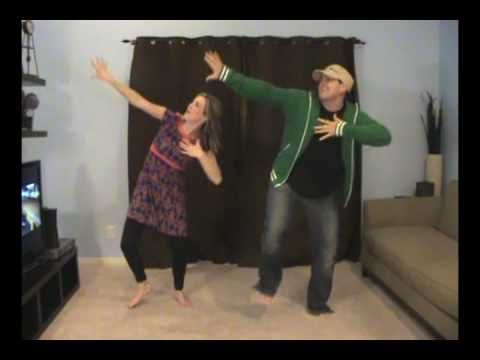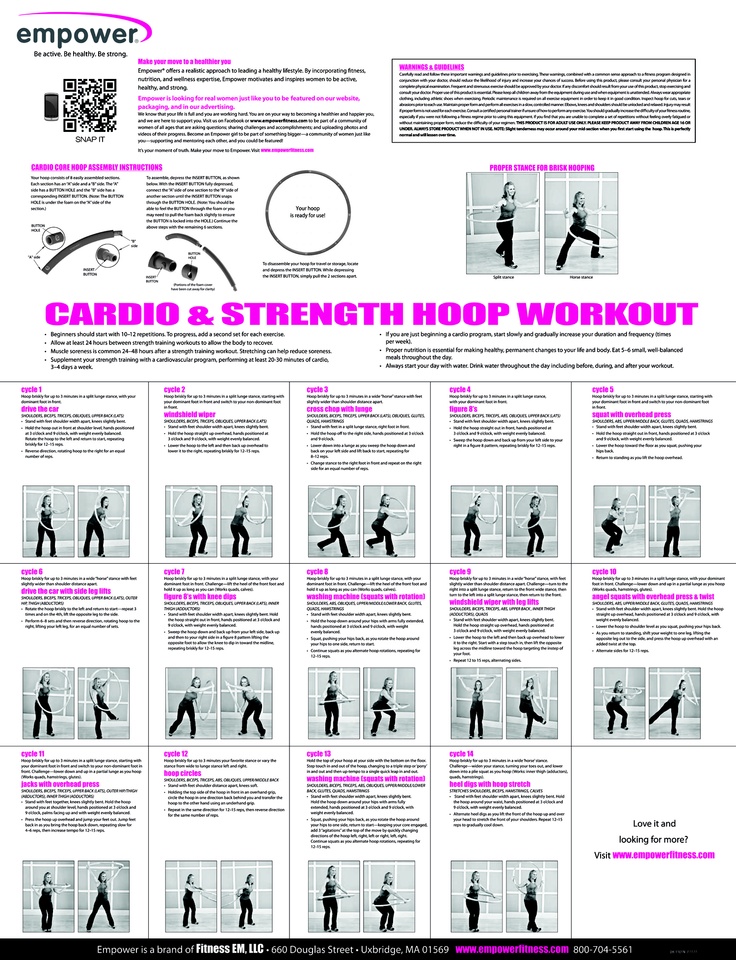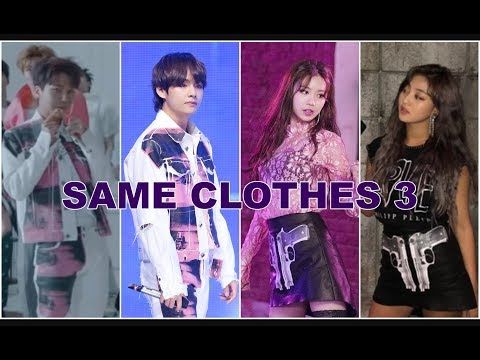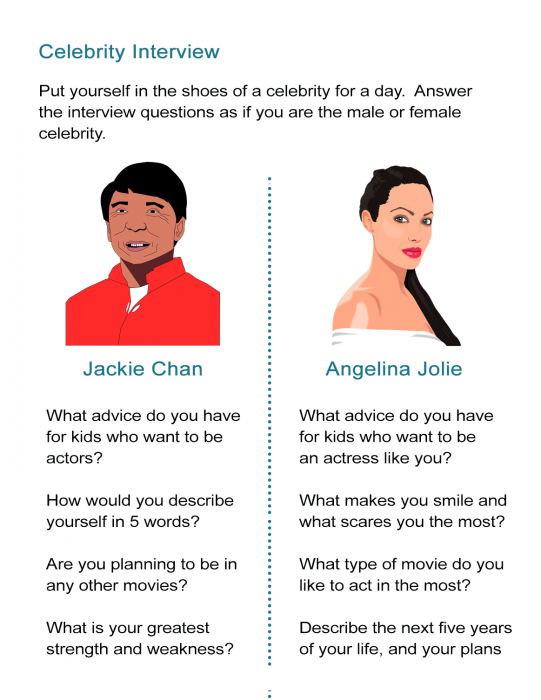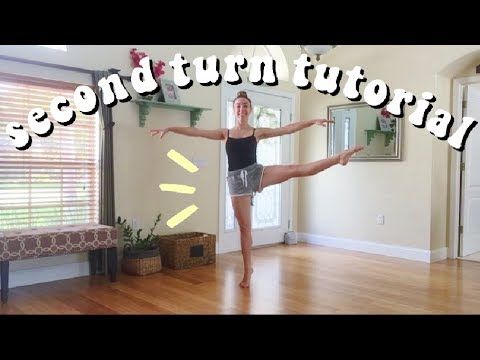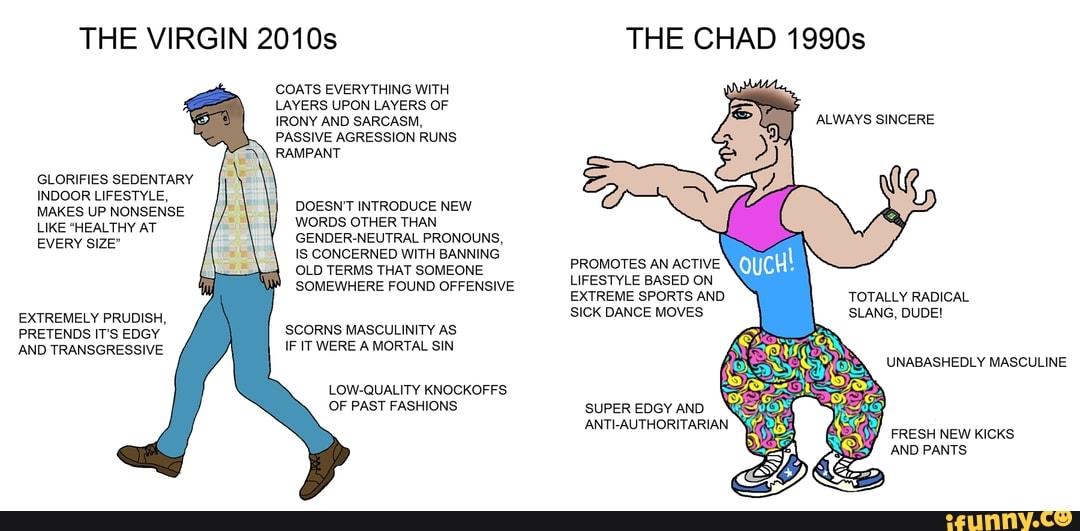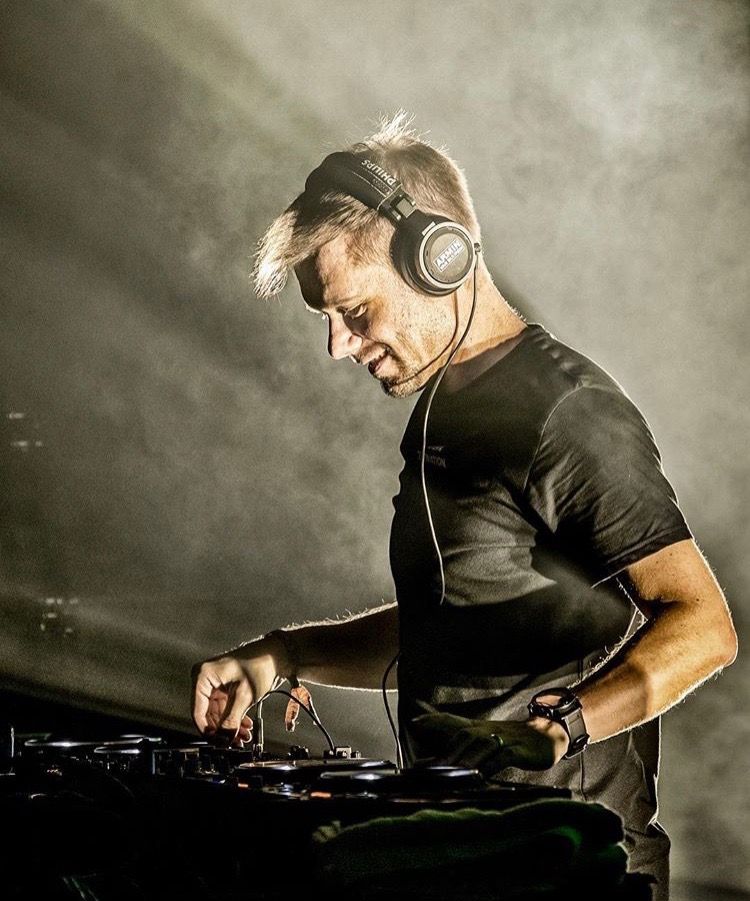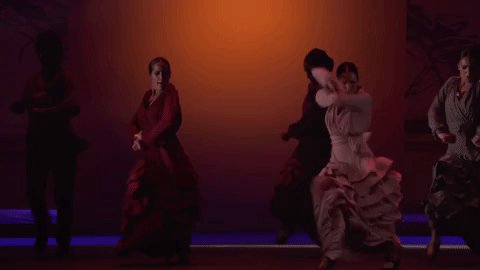How to get a hip hop dancers body
Bust a Move With These 9 Energetic Hip Hop Dance Workout Classes
Working out at the gym or at home can get boring and repetitive; you should try out a dance workout instead. Did you know that a hip-hop dance workout can give you an effective full-body workout? Because it is such an intense form of physical activity, you can burn tons of calories and groove to the beat at the same time.
These days, it's easy to find dance workout options online, and YouTube is especially great, as almost all the videos are free to watch! Be sure to give these nine hip-hop dance workouts a go.
You won't find a Tabata class more fun than this one. Instructor, Keaira LaShae, takes you through a selection of modified dance moves that'll have you sweating in minutes. The class consists of a couple of intense hip-hop actions like jumps with twerk legs and leg lifts with jump squats.
For more awesome, fun ways to get in shape, take a look at Keaira's own YouTube channel, MOVE Fitness. Newbies, you might look a bit silly doing these hip-hop moves, but luckily you can do them from the comfort of your own home!
Grab your water bottle and towel because it's going to get super sweaty in this hip-hop workout class. This 30-minute workout targets your glutes and core, yet it is extremely fun, and the dance choreography is exactly right.
If you're looking for more hip-hop fitness workouts, ranging in length from 20 to 40 minutes, you can head over to the Mike Peele YouTube channel.
Always remember that you don't have to be a professional dancer to take part in these classes; just bring some energy, a positive attitude, and have a good time.
This workout makes you feel like your body is on fire, but in a good way. 25 minutes is all you need to have a lot of fun in this class, so much fun that you won't mind all the sweating.
You don't have to use any fancy exercise equipment or be a professional dancer to join in. Simply enjoy moving and grooving to your favorite throwback hip-hop beats from top artists like Usher, Rihanna, and Beyonce.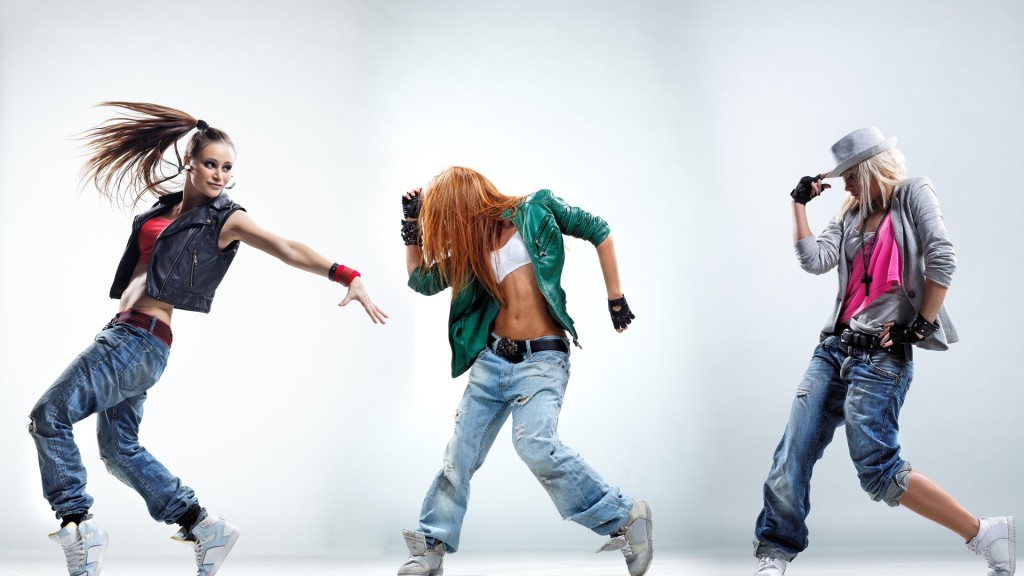
The YouTube channel Tara's Body also features other great dance workout videos, like reggaeton, samba, and AfroDance tutorials.
This hip-hop dance class is perfect for you if you hate going to the gym and would prefer an alternative workout method. Certified fitness instructor, Emily, guides you through each move and offers low-impact options, too.
This one may be a little different, but it's still fun, as you'll be bouncing around to old-school hip-hop beats like California Love from Tupac and Bust a Move by Young MC. If you can't keep up with the hip-hop moves, try something else from the EMKFIT YouTube channel. There's a wide range of videos available, such as lower body and core workouts—plus a fun K-Pop dance workout.
Do you love dancing, but you're too shy to do it in front of other people? Join Mana Ikeda and do this energetic dance workout in your living room without feeling uncomfortable. The workout is a quick 18 minutes long, and it's achievable for all fitness levels, whether you're a rookie dancer or a professional.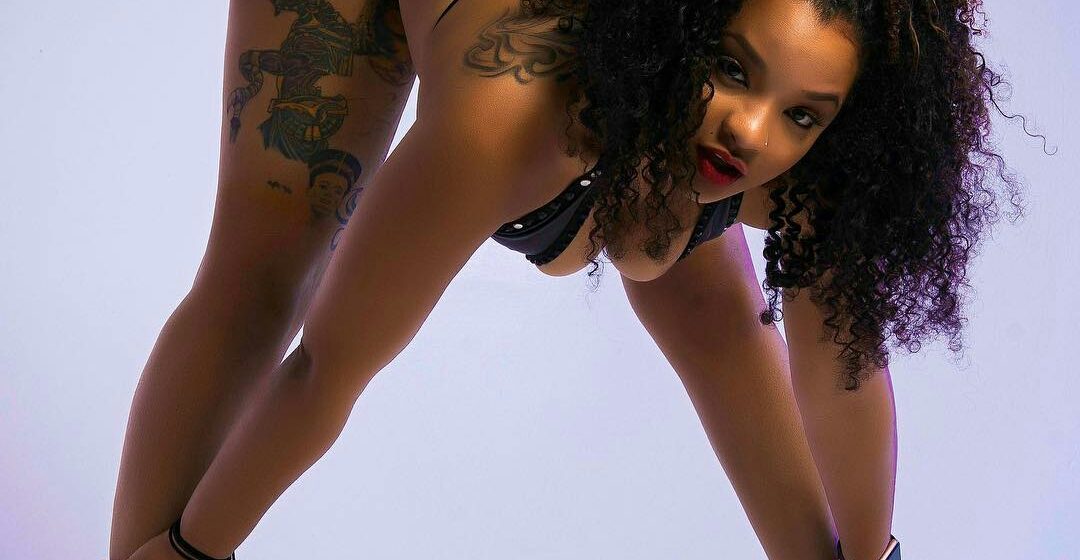
The STEEZY YouTube channel is basically your ultimate online guide on how to dance. Here, you can work out in a way that is fun and effective, be it a Latin-inspired dance workout or a hype dance workout.
If you're looking for a short and sweet dance workout that's perfect for beginners, then this is the one for you. The video is less than five minutes long, so you can fit in a quick session before or after work or even during your lunch break.
You'll enjoy this workout because it is straightforward and easy to follow. The hip-hop moves are all pretty laid back, like syncopated jumps and slow punches.
If you don't get the hang of it the first time around, don't give up. Try the same workout again or take a look at Danielle's YouTube Fitness & Dance playlist.
This quick, 15-minute workout features an enjoyable hip-hop routine to help you get fit and learn some cool choreography along the way.
One of the best dance instructors and choreographers, Gandalf Archer Mills, breaks down each move, so you can accomplish all the moves correctly.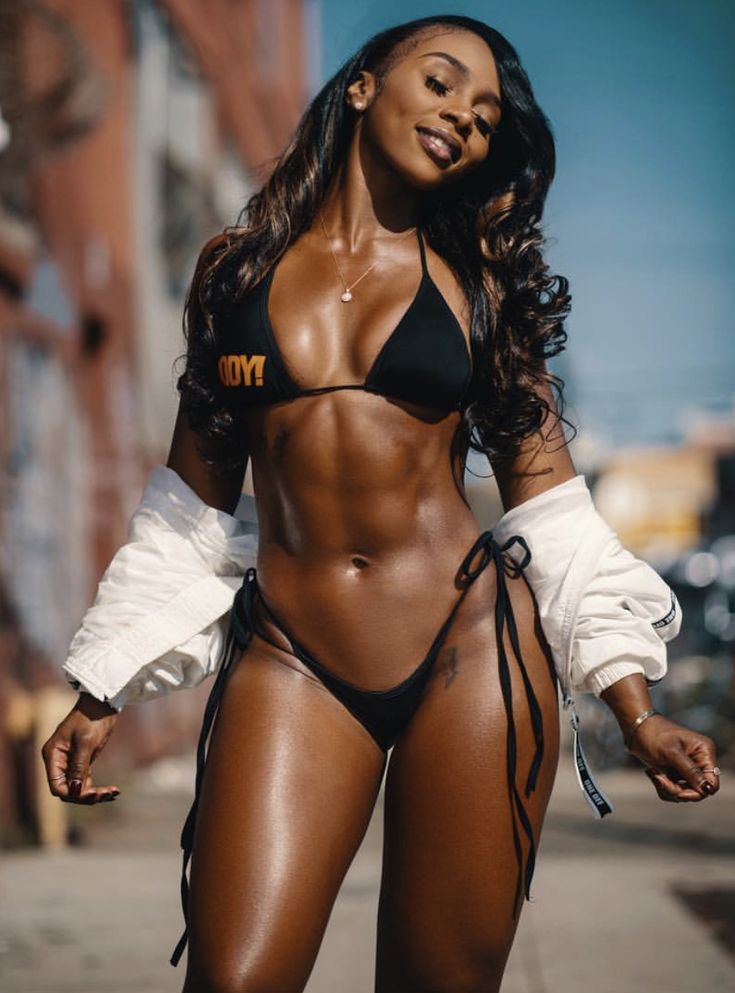 Gandalf is full of energy and provides simple instructions, making it easy for you even if you have zero dance experience.
Gandalf is full of energy and provides simple instructions, making it easy for you even if you have zero dance experience.
The Les Mills YouTube channel is where you'll find all the best dance workouts and dance instructors. Alternatively, visit the Les Mills website to subscribe to LES MILLS+, where you can get a free trial and access to thousands of awesome workout videos.
Exercising shouldn't be boring, but sometimes it can be. If you're sick of online walking classes or doing indoor bicycle workouts, try this lively 15-minute hip-hop dance workout.
Instructor Brandon definitely motivates you throughout the class. Plus, he encourages you to have fun instead of focusing too much on getting all the moves perfectly right.
Be sure to check out the 305 Fitness website for a three-day free trial and access to a massive library of different workout classes.
Dancing is not just exciting; it lets your creative juices flow. And now it's possible to get up from your couch and do a full-on dance session without leaving the house.
This workout from Kyra Pro is plain fun. In the class, you can sing and dance along to a few of the queens of rap and hip-hop, such as Lizzo, Nicki Minaj, and Missy Elliott. On top of that, the moves are easy enough to do whatever your skill level is. However, don't be deceived; the workout will leave your muscles burning.
For a range of awesome dance workout playlists ranging from beginner to advanced, head to Kyra Pro's YouTube channel.
Do These Energetic Hip-Hop Dance Workouts Without Going to the Gym
Exercising at home gets old really quick, especially if you've been doing the same routine for a long time. Adding one of these fun hip-dance workouts into your weekly workout session can provide a much-needed mood boost.
The best part about taking part in these hip-hop dance workouts on YouTube is that they're all completely free. So forget about gym fees, let loose, and get sweating!
How To Dance Hip Hop For Beginners
So, you want to learn how to dance Hip Hop! You’ve come to the right place.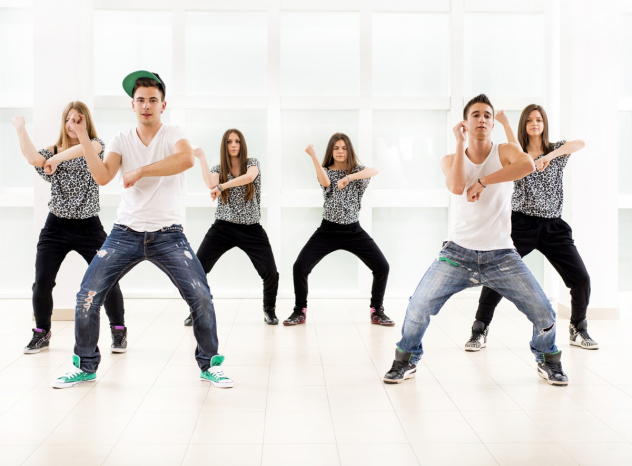
*Note: The term "Hip Hop" is more accurately described in this article: What Is Hip Hop Dance?
For the sake of continuity, we will refer to it as Hip Hop Dance in this article.
You will learn everything you need to learn how to dance Hip Hop, from understanding music to where to find a Hip Hop dance class in your community. Ready to learn how to dance Hip Hop? Let’s get moving.
Part 1: Musicality
What is dance musicality? Why is it important in learning Hip Hop dance? Dance musicality is how dancers hear, interpret, and dance to music. It sets the tone for our movements and gives sounds to follow.
But, in order to start leaning about music and how we dance to it, the first step is learning how to count music itself.
What is an 8-count?
We use an 8-count to break down the structure of music. It's sort of like a map to know when you do a certain move. For example, if a choreographer says that a move should be executed on "the 5," you're going to count the beats of the music like this: "One, two, three, four, MOVE."
It's sort of like a map to know when you do a certain move. For example, if a choreographer says that a move should be executed on "the 5," you're going to count the beats of the music like this: "One, two, three, four, MOVE."
Try this:
Listen to a song, any song, and try counting in your head – "One, two, three, four, five, six, seven, eight." Match your counts to the beat of the song – this is what you'd naturally bob your head or clap your hands to.
Follow along with this video for some practice, and a further breakdown of all the moments that you can hit within an 8-count.
Different musical elements of a song
*We're not going into every single sound found in the history of music! Just the basics, so as not to overwhelm or overcomplicate.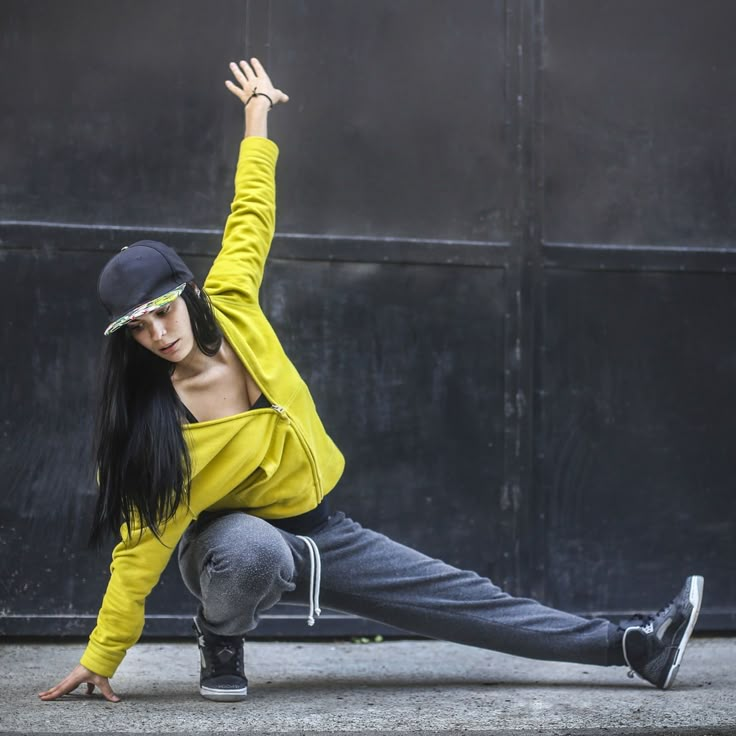
Lyrics
The words that the singer is singing! The lyrics are probably the easiest to distinguish, but hardest to count/dance to, since vocals don't always match the strict structure of 8-counts. Sometimes, choreographers will make moves that correlate with the lyrics by miming actions that match what they singer is talking about.
BassThe bass is the lowest of the standard four voice ranges (bass, tenor, alto, soprano), or, the lowest sound in a musical composition – its there to support the melody. Different instruments can produce a bass sound (most often drums or bass guitars). Dancers often use the onomatopoeia "boom" to describe a bass sound, and we tend to associate bass sounds with strong, grounded movements like a foot stomp or a Woah.
SnareIt's the sharp, staccato drum sound you hear in most Hip Hop songs, kinda like the sound you make when you snap a rubber band. Dancers often describe a snare as a "ka!" when they talk about their routine. Dancers usually do quick, sharp movements to match this sound. Think of how a dancer might suddenly shoot their arm to the side and snap their fingers, or quickly turn their head to look at the audience.
Dancers usually do quick, sharp movements to match this sound. Think of how a dancer might suddenly shoot their arm to the side and snap their fingers, or quickly turn their head to look at the audience.
A hi-hat is produced by a hi- hat cymbal. Dancers often describe this sound as "tss tss" sound. Hi-Hats are usually paired with sharp movements, but they might melt into something groovier if the sound of the cymbal creates a reverb-y echo. Think of how a dancer might pop their chest right when the hi-hat is struck, and then might add a couple smaller pops right after the first one to mimic the way a hi-hat echoes.
SynthA sound synthesizer produces electric signals converted to sound through amps and loudspeakers. A common type of synth is the synth piano, which may sound like a long, slow bass – a"wobba wobba" sound. This sound goes great with a gooeyyy movement – you want to mimic the way the sound is rippling by using resistance and waves in your movement.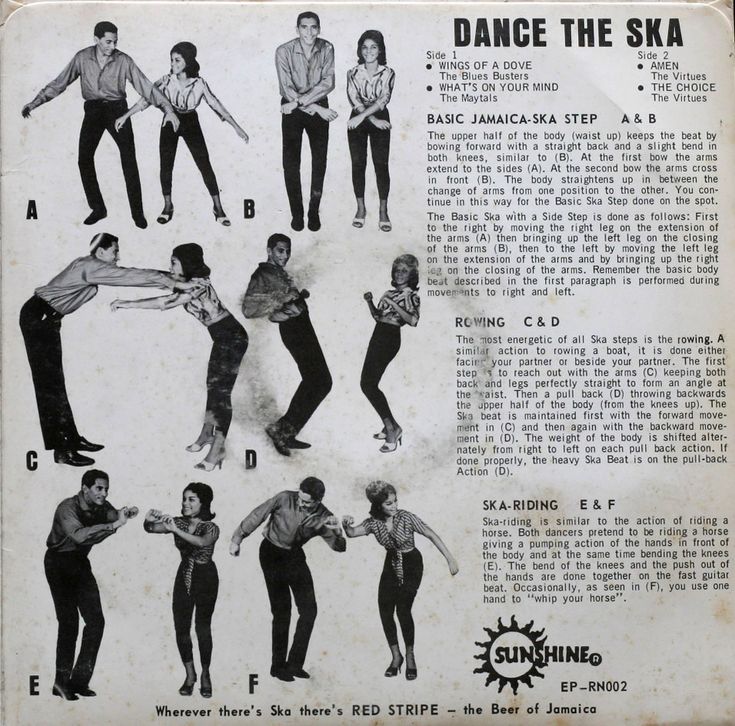 A dancer might do this by rolling their chest slowly to a synth.
A dancer might do this by rolling their chest slowly to a synth.
Guitar strums and melodies are also useful to take note of, for more instrumental / acoustic songs. You can do whatever feels right in the moment to these types of songs!
Keyboard/PianoThe piano sounds will also accent, or set the melody/harmony of the song. You can dance to these sounds separately or as chords. If you hear a high-pitched piano note over and over, you might hit that note with an upper-body-focused little move. If you hear a rich set of chords, you might do some flowy, full-body moves to communicate how rich those sounds are.
Try this:
You'll start to see patterns when you listen to music more carefully. Maybe there's a bass drum on each 1st and 5th count, or a snare on every even count. As you're clapping or bouncing or whatever you're doing to mark the beats in the music, take notice of the sound patterns that exist within it. It'll cue you in to the musicality you should use when you dance.
It'll cue you in to the musicality you should use when you dance.
What does Hip Hop dance musicality look like?
Dance musicality is demonstrated in several ways, depending on the dancer's style, the song, and how they choose to interpret the music.
Check out these 2 pieces to the same song, that are completely different in both style of dance and musicality choice.
How Many Drinks – Pat Cruz & Aggie Loyola
How Many Drinks – Carlo Darang
Everyone listens to music differently, as you can probably tell from these two pieces. Choreographers utilize different pictures and textures to portray how they hear the song.
Not sure what textures are? Read this: What Are Textures In Dancing?
Great choreographers have unique ways of moving to music that bring out sounds you might not have heard when you’re just listening to the song.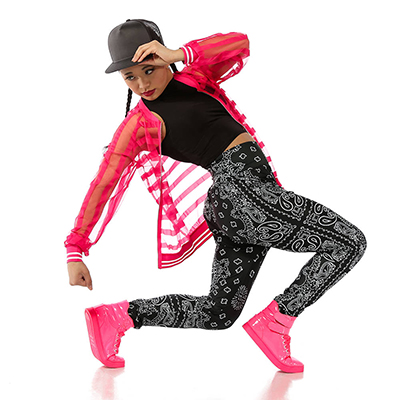 Now you know what it means when someone says. “UGHHH, their musicality is so sick!” By being more familiar with the different sounds that make up a song and their relationship to the flow of it, you'll have a better understanding of how to execute moves to embody those sounds more closely.
Now you know what it means when someone says. “UGHHH, their musicality is so sick!” By being more familiar with the different sounds that make up a song and their relationship to the flow of it, you'll have a better understanding of how to execute moves to embody those sounds more closely.
This dance tip is from Scott Forsyth's class on STEEZY Studio!
Part 2: Body Awareness
Have you ever taken a yoga class? Then you'll know that a big objective of yoga is simply to be present – in the mind, and the body. By doing so, you're bringing together your mental and physical selves. Similarly, as a dancer, your mind and body must be working together – your mind is the part that understands the music and the intent behind the movement, and your body is the actual tool for moving.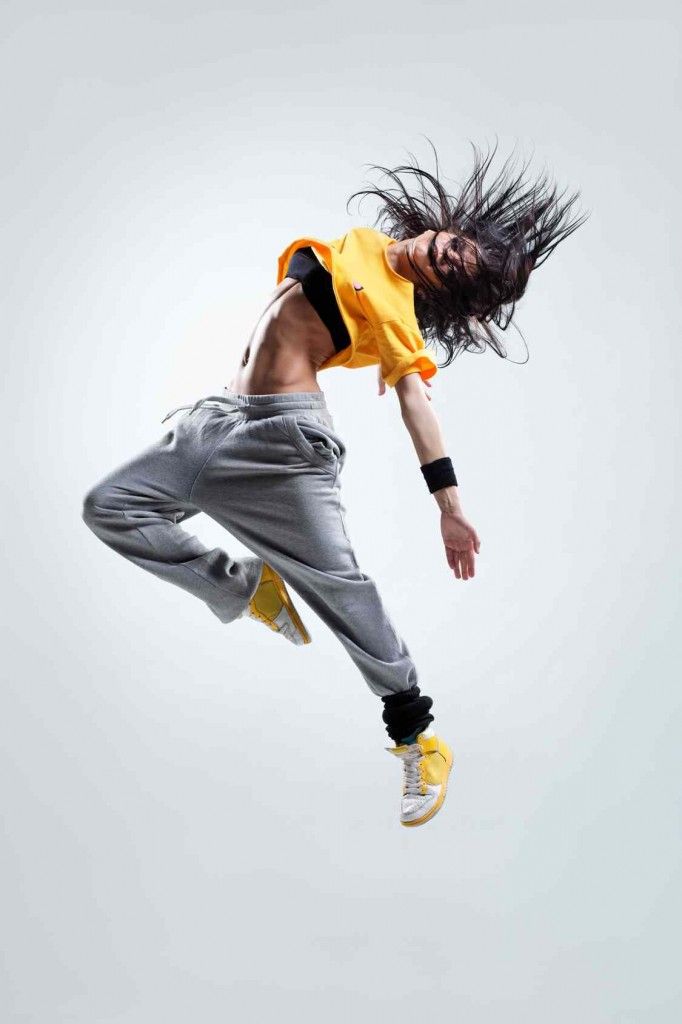 Here are ways to train your body to learn to dance Hip Hop.
Here are ways to train your body to learn to dance Hip Hop.
Lay on the floor, and close your eyes. (Turn on some light music here, if you want.)
Then, go through this list of body parts, and focus your thoughts and feelings on each one. Flex or move the part to draw more attention to it. Once you feel fully comfortable with where it is and what it feels like, move on to the next one.
Arms
Shoulder
Forearm
Wrist
Fingers
Fingertips
Legs
Thigh
Knees
Calves
Ankles
Feet
Toes
Hips (Try rotating them in and out)
Chest
Upper chest
Core (tummy area)
Lower abdomen
Neck (Try turning your neck, and also rolling it clock- and counter-clockwise)
It sounds almost too easy to be effective – but the key here is not the difficulty of the movement (which is obviously very minimal). The key is how familiar you're becoming with these body parts, which requires a surprisingly great deal of focus.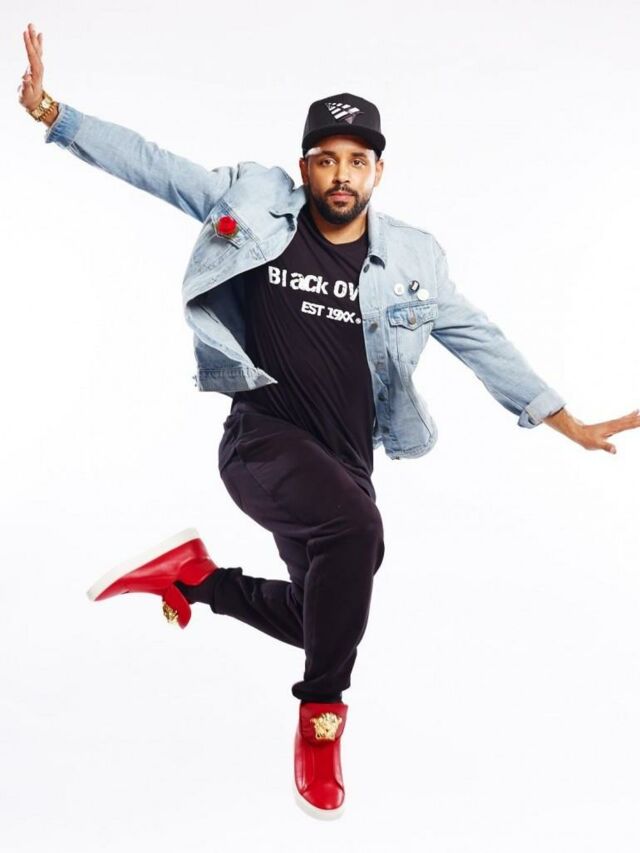 Muscle memory starts with muscle awareness! By dedicating your time and energy in getting to know your body, you're training your most important tool as a dancer!
Muscle memory starts with muscle awareness! By dedicating your time and energy in getting to know your body, you're training your most important tool as a dancer!
Cool, so we're getting to know what each part of the body feels like in a resting position. Let's create some pictures to explore how our bodies look and feel in certain placements. We'll be using 3 main ideas for these exercises:
- Focus
- Posture
- Angles
What "focus" refers to in dance is the direction your face is facing. Timed right with a committed facial, your focus has the power to make or break a piece.
Whatever pose you're holding or pathway you're moving through, your focus is most commonly straight to the mirror (not the greatest habit, but it's good to watch yourself at first, when developing body awareness), to the right, to the left, up, down – and to varying degrees.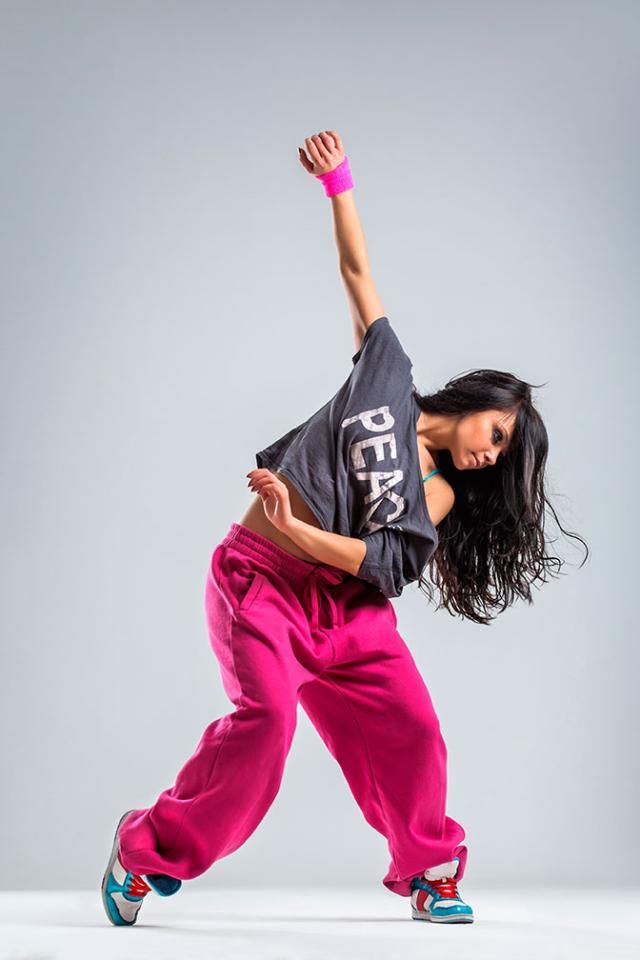
For example, "right 45" can refer to turning your face toward the right, but only halfway from directly ahead and your right side. "Down left 45" signals looking slightly toward the left, with your chin pointed down, so that your eyes are aimed at the bottom corner of the wall. Focus changes will flow naturally as you learn choreography, but sometimes the choreographer will specify certain pictures and combos to have a certain focus.
This dance tip is from Jeffrey Caluag's class on STEEZY Studio!
Try this:Stretch your neck to the rhythm of a song, by looking to the
- right, left, right left, ↔ then switch to
- up, down, up, down
- then hit the diagonals! ⤢⤡
- then roll your neck around so your eyes are making a big circle ⤿ and switch directions ⤾
Posture has a lot to do with the style or mood of the piece.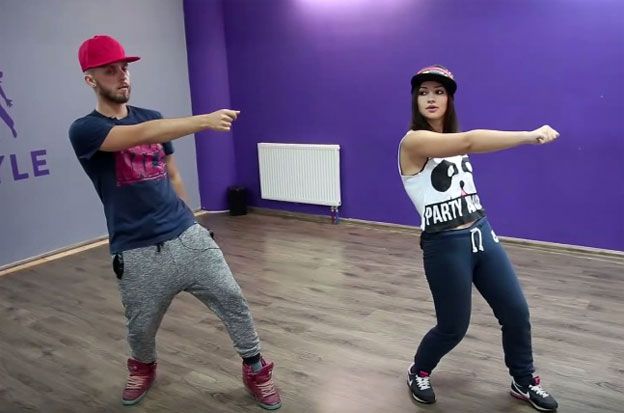
For example, Whacking will call for your chest to be more open, and your focuses will be sharp and purposeful. In a more swaggy, laidback-feeling piece, your posture might be directed more toward the ground, with a relaxed torso and shoulders. Think of posture as huge part of your body language that communicates tone and mood.
Melvin Timtim explains how he channels Lil Wayne through his posture in this STEEZY Studio class.
Watch it in action here:
PicturesBefore getting into full-body movement, let's study how your body feels when hitting certain angles. When you break down the movements of Hip Hop dance, you will see certain stops in the movement, or pictures.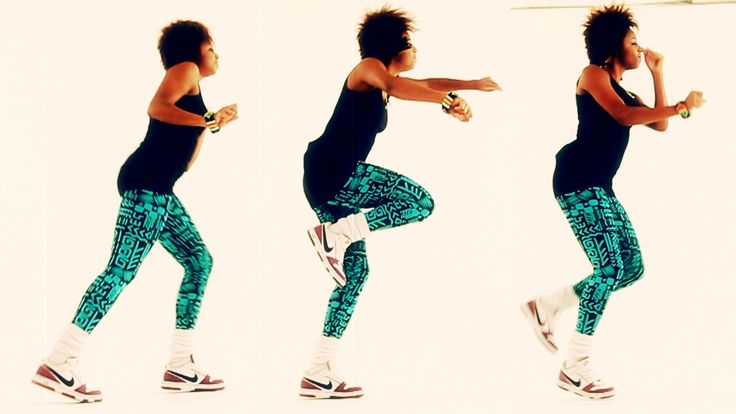
Practice creating different pictures in the mirror, and pay attention to how they make you feel.
Do you feel powerful when your legs are apart and your hands are on your hips?
Do you feel weak when your hunch your shoulders and point your knees inward?
Part 3: Execution of movement
Grooving!!!!
Chances are, you probably already know how to dance. When you go to a club, or listen to music on the radio, do you bob your head or sway side to side? These are grooves – which is the foundation for Hip Hop dance and Open Style choreography. Hip Hop Dance grooves were invented by people who were dancing at clubs and parties to just vibe out with each other.
Bianca Vallar explains the importance of learning your fundamental Hip Hop moves here:
Practicing grooves are KEY to not looking awkward when you dance.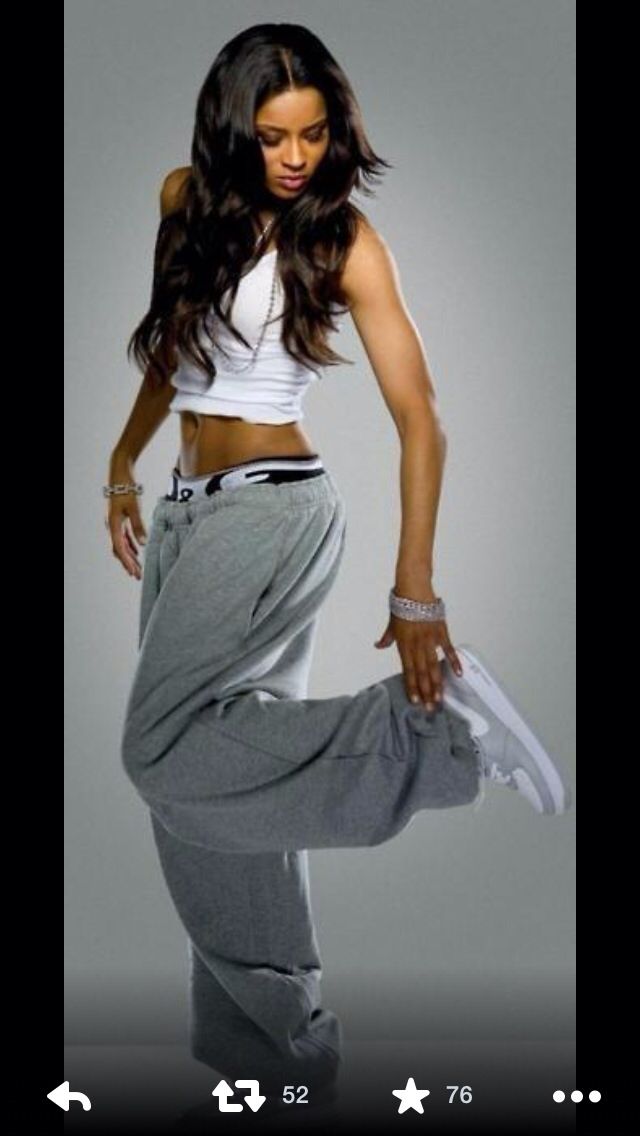
(But there are more tips here: How To Not Look AWKWARD When You Dance)
There are several elements that factor into how your movement looks. These come more into play when executing choreography that's based around Hip Hop's foundations.
Hitting using the RIGHT amount of energyHitting is the fundamental move of Popping. You can learn more about it here: What Is A Popping Hit
Even if you're not a Popper, you probably use a similar technique to "hit" certain sounds in choreography.
Flexing your muscles creates a visual that matches louder musical elements, like a bass.
When you hit, you don't want to be too soft and undersell the move, but you don't want to go TOO full out and overkill it. The goal is to become/embody music, not to compete with it!
Imagine your energy levels as following the pattern of an audio visualizer.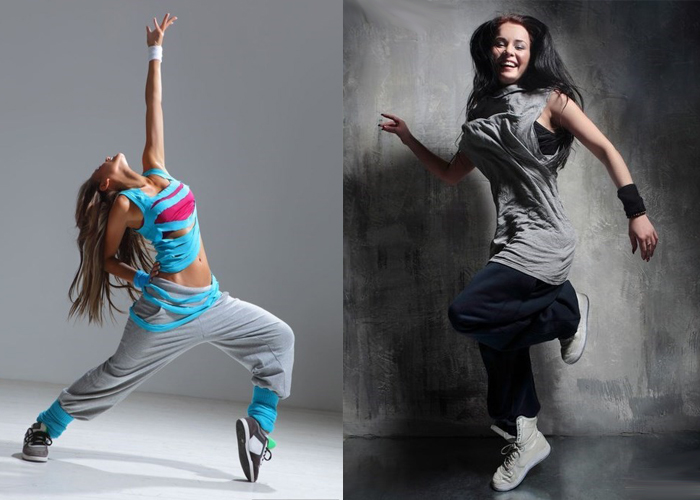 The louder the sound, the higher the level, and the stronger your hit!
The louder the sound, the higher the level, and the stronger your hit!
This technique is most commonly used to describe movement in in-betweens of pictures – the "pathway" between A and B.Here are a few ways "milking" is used
- At the end of a move, instead of "putting a period" on it, that is, ending it definitely by stopping the movement, think of it as a "..." The "dot dot dot," connoting that you're dragging out that move, to extend its pathway past "B," what would've been the stopping point without the milking.
- Or, you can milk from one picture into a completely new picture. To practice this, set 2 poses. Every 4 counts, change your position.. but here's the challenge! Use a different pathway each time, to slowwwly get your body where it needs to be.
- Think of milking as a change in acceleration (ooh, physics terms!) Really, all moves are some sort of slowing down, speeding up, or stopping.
 Milking is just the term for gently stepping on your brakes. Where your car goes (the pathway) is up to you.
Milking is just the term for gently stepping on your brakes. Where your car goes (the pathway) is up to you.
Learning how to manipulate your speed is going to be a huge factor in shifting dynamics and textures. To practice speed control, pretend that your arms are hitting a "wall." But instead of stopping at this wall, that wall is the checkpoint at which you change your speed. Go from fast and hard hitting, to completely "milking." This variance in speed will help switch up the mood and "textures" of a piece.
TexturesThink of textures the way you think of the physical connotation of the word. Have you ever heard dancers being described as "smooth"? They probably move like honey. Visualize the way that a song feels. Is it staccato, with abrupt starts and stops? Is it flowy and silk-like, with lots of vocals? Is it gruff and interrupted, like an angry rap song? While many songs do embody a specific "texture," most have elements of several.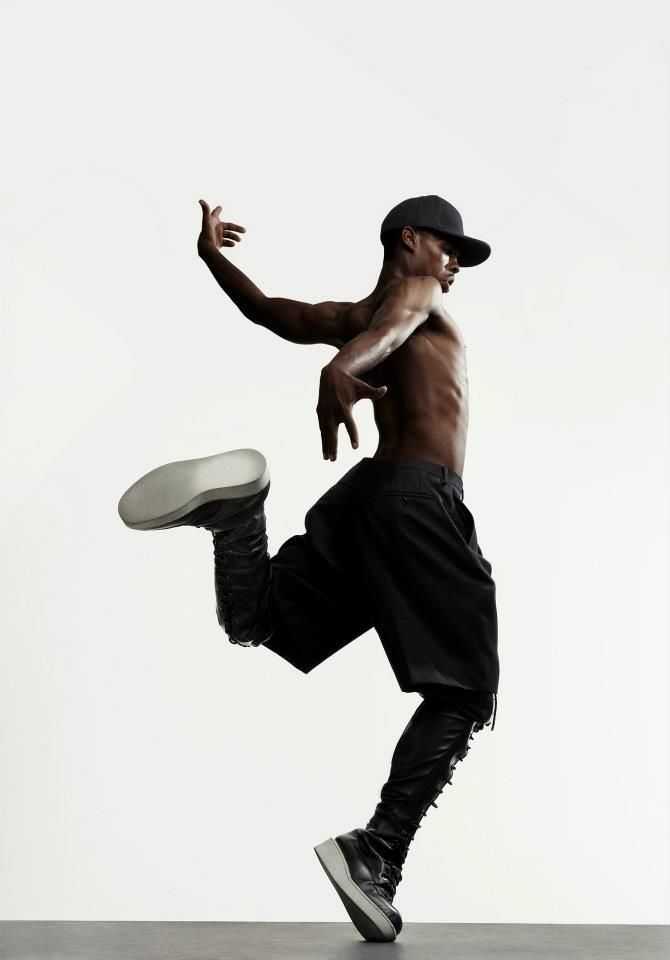 And because a lot of songs carry with them hints of different textures, the variation in your hits, milks, and speed, are all going to contribute to how you match the music.
And because a lot of songs carry with them hints of different textures, the variation in your hits, milks, and speed, are all going to contribute to how you match the music.
Part 4: Class and Training
OKAY OKAY, enough talking about how to dance hip hop – let's start practicing it already! One of the best ways to practice a skill is to... take a class!
Looking for a Hip Hop dance class in your area
If you don't have a dancer friend who can introduce you to different dance classes, it's okay! That's what the internet is for. Do a Google or Yelp search using key words like "Dance classes in ____" or "Dance studios in _____" or "Hip Hop classes in _____" or "How to dance Hip Hop in _____"
Do you live in LA? Train here: The Dance Studios In LA You Need To Be Training At
Once you have a good list of nearby dance studios, go on their websites to see what kind of class offerings they have. If they do not have a website, then call the studio and ask for their schedule. This way, you can ask more questions while you're on the phone, too. Instagram is is a great tool for finding dance studios and dance classes, too!If you keep noticing flyers or class videos (either in your personal feed, or through Instagram's "Explore" page), and click on the location link, you can see where the studio is located. Better yet, if the studio itself has an account, you can stalk their class schedules and instructors to find out more.
If they do not have a website, then call the studio and ask for their schedule. This way, you can ask more questions while you're on the phone, too. Instagram is is a great tool for finding dance studios and dance classes, too!If you keep noticing flyers or class videos (either in your personal feed, or through Instagram's "Explore" page), and click on the location link, you can see where the studio is located. Better yet, if the studio itself has an account, you can stalk their class schedules and instructors to find out more.
Finally, lurking skills from stalking your crush is coming in handy! If you like the instructors / classes offered, or the vibe of the studio, add that into your list of prospective places to take class at.
Which Hip Hop dance class should you take?
Once you've secured the place where you'll be taking your dance class, you need to decide which class to take. You want to make sure you feel comfortable diving into your first dance class, and that it will benefit you, rather than leave you feeling defeated.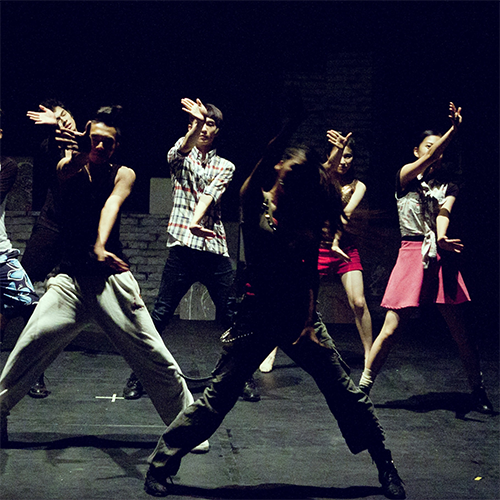
A "Beginner" level dance class is probably the best to start with. Even if you're not a beginner dancer, read Why Every Dancer Should Take A Beginner Dance Class
How to prepare to take a Hip Hop dance class
Once you've decided on your dance class (where / when / which one), it's time to get ready. Choose an outfit that is loose and comfortable, but one that you still feel confident in. By no means do you have to follow the latest trends in "dancer fashion." It's about YOU and what makes YOU feel cool. Once you get to the studio, you're going to register at the front desk, pay for your "Drop-In" class, and wait for the room to be ready. There's usually back to back classes at studios, so another class will be exiting as you're waiting to enter. When you get inside, put your stuff down and wait for the choreographer.
Until then, you can just hang out, start stretching, or talk to other dancers in the class. You'll probably start to feel nervous right about now.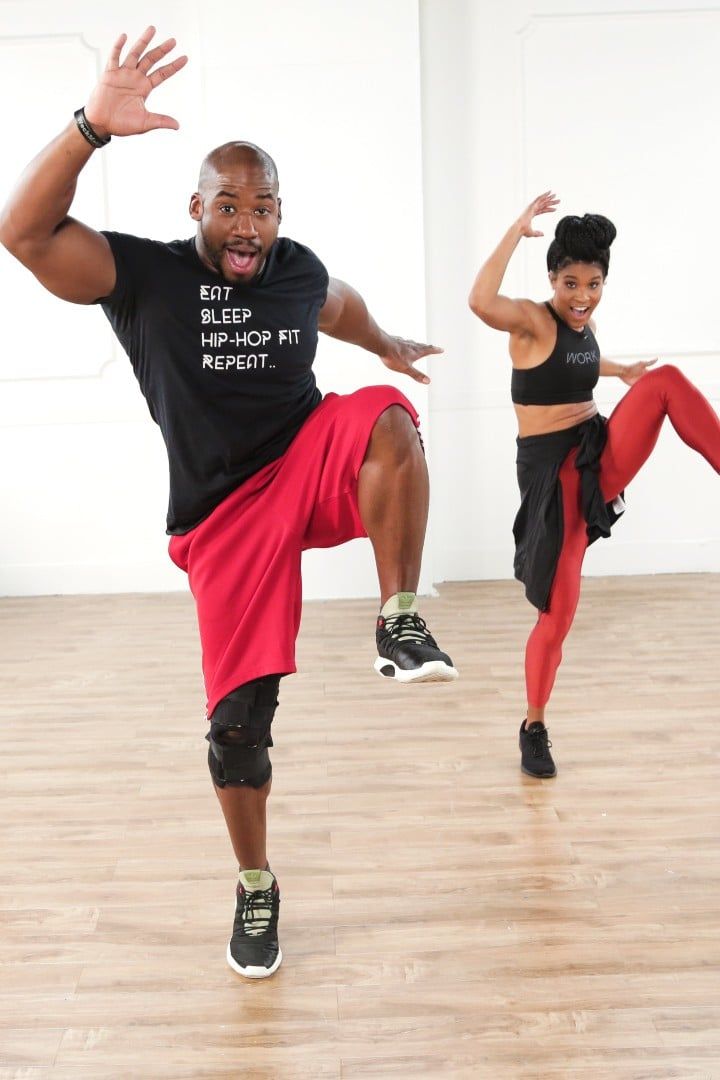 Remember: It's all about your mindset! Take a deep breath and remind yourself that a class is called a class for a reason: you're there to learn! So instead of being intimidated by the idea of trying something new, get excited to start learning.
Remember: It's all about your mindset! Take a deep breath and remind yourself that a class is called a class for a reason: you're there to learn! So instead of being intimidated by the idea of trying something new, get excited to start learning.
What to know when you take a Hip Hop dance class
The choreographer will start (most likely) by introducing themselves, and leading a quick stretch. Aside from the actual learning process (which we'll talk about in the next section), there are a few "class etiquette" notes to keep in mind:
Ask questions
If you're struggling with a move, it's perfectly *fine (encouraged!) for you to ask questions.*However, don't do this in excess! Try and figure out the answer yourself first (by looking closer at the move, trying it out in different ways for yourself), and if you still need clarification, ask.
Switching lines
When the choreographer says to "switch lines" – if you're in the front of the room, move to the back, and vice versa.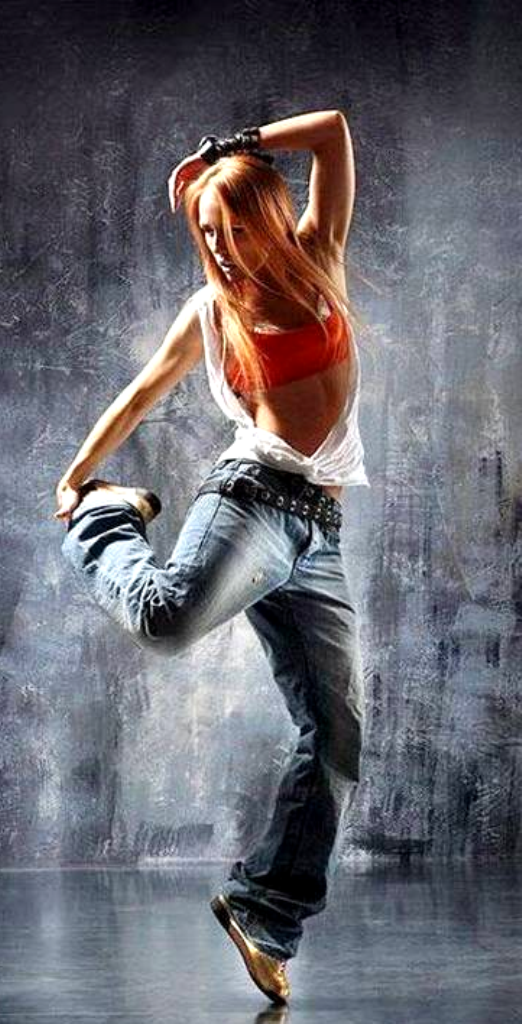 This is to ensure that everyone gets a fair chance at having a good view of the choreographer throughout the class. It'd be a little selfish to hog the mirror the whole time, right?
This is to ensure that everyone gets a fair chance at having a good view of the choreographer throughout the class. It'd be a little selfish to hog the mirror the whole time, right?
Switching inside / out
In addition to switching lines, the choreographer might also ask the class to switch "inside out" / "outside in." And yep – it's exactly as it sounds. If you're toward the middle of the room, move closer to the walls, and vice versa.In general, it's good to move around the room while you take class, regardless of whether the choreographer is telling you to or not. It helps you to not grow dependent on your position to learn or execute.
Sitting down
There are a few cases where you'll have to take a seat during the class.
1. When the choreographer is demonstrating the moves they taught and you're in the front of the room. We do this so that, when the choreographer first matches the moves to the music, everyone can see what the choreography is supposed to look like.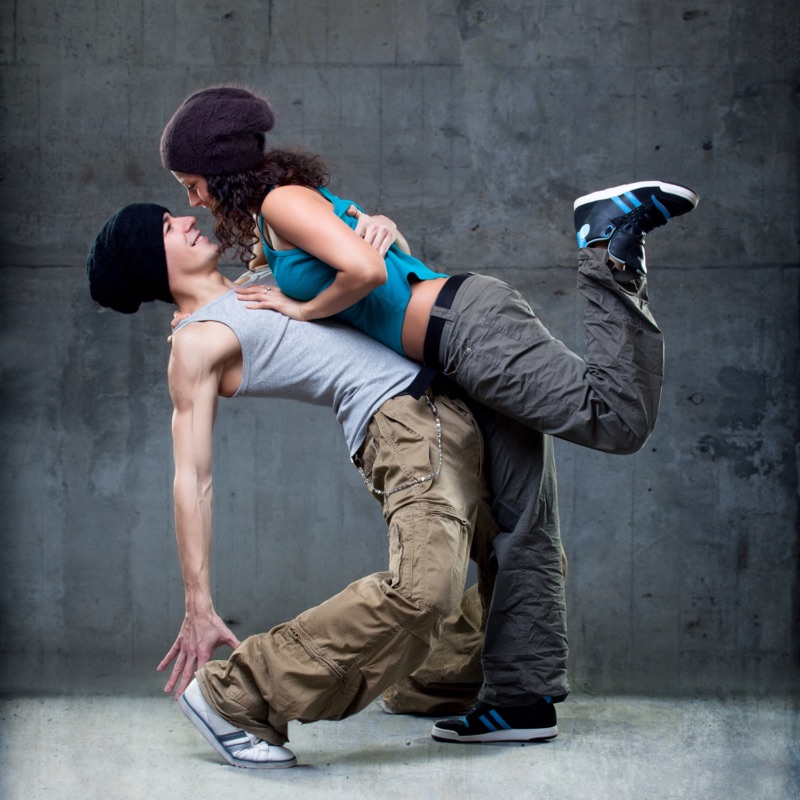
2. If the studio is too crowded, and the choreographer needs to demonstrate the choreography for the "back half" to see. It's easy to follow the choreographer if you can actually see what they're doing, but often the people in the back of the room have blocked or limited vision. (Especially when it comes to intricate details or footwork). We have the front half of the room sit down while the choreographer can teach the back half of the room, then have the whole class join in once everyone "gets" it.
What the choreographer means...
When they say to "Watch"
This is when it's polite for the people in the front of the class to take a knee/seat. Even if you know the moves, really WATCH the choreographer demonstrate the piece. While you watch, take note of where the piece counts in, the true tempo of how fast the song goes, and how the choreographer is hitting each move. The closer you pay attention, the closer you'll know what to emulate.
When they tell you to "Mark it"
Marking means that you are doing the piece more in your head than on your body – but you should still be doing it with your body.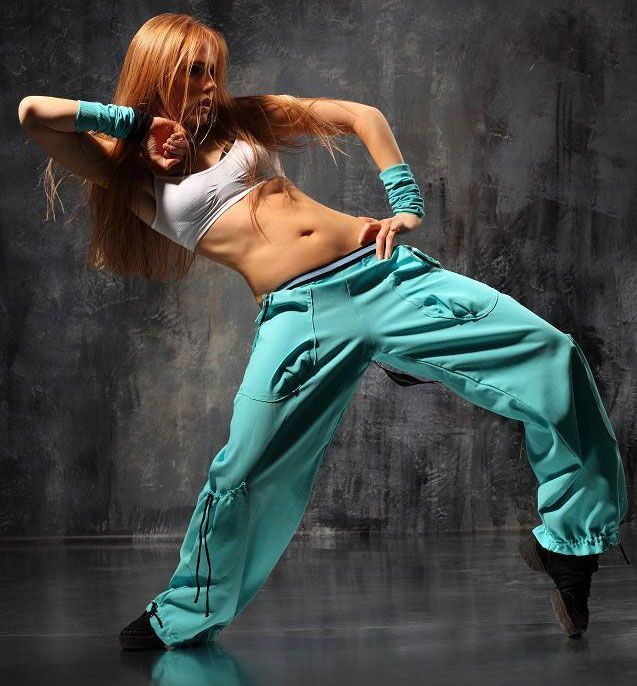 Think of it as doing the piece, but with less energy. Be more conscious of the music, timing, and where your body placements are rather than releasing your bankai. The choreographer might use percentages to indicate how much energy you should be putting into your mark. Example: "Let's go just 50% for this first run-through!" or "Mark it around 80%"
Think of it as doing the piece, but with less energy. Be more conscious of the music, timing, and where your body placements are rather than releasing your bankai. The choreographer might use percentages to indicate how much energy you should be putting into your mark. Example: "Let's go just 50% for this first run-through!" or "Mark it around 80%"
When they tell you to "Go full out"
All right, THIS is when you go 100% with your energy. Think of it as the most you can do for everything: cleanliness, timing (that you should've perfected in your mark), but now with power!
Read this for tips: How To Dance Bigger, Stronger, And More "Full Out"
How to learn when you take a Hip Hop dance class
Learning choreography
Take note of pictures, angles, footwork, focus, etc.
Scared that you'll fall behind? Use these tips for How To Keep Up In Dance Class
Choreographer's execution
WATCH them demonstrate for the class! Take note of texture, dynamics, milking, everything from their demeanor and posture to their facials and energy levels.
Listening to the music
A huge huge huge huge huge part of being able to get a piece is knowing the music. Know what sounds you're hitting, when those sounds come in the music, the tempo, mood, and style of the song.
Practice performance
If you're satisfied with starting out learning just the choreography, that's fine! But if you feel comfortable with the piece, try and add a little pizzazz to it! Your freestyle, your facials, your personal swag.
After you take a Hip Hop dance class
A class experience is not limited to just learning choreography. After all the moves are taught, there will be a few things the choreographer has you do.
Groups
This is when the room is divided into sections, and that group will perform the piece as the other students watch. Groups can get intimidating! But it's also an integral part to your growth. Push yourself outside of your comfort zone and just go for it!
Select group
The choreographer may or may not call out a "select group" – a group of students that they noticed and want the rest of the class to watch.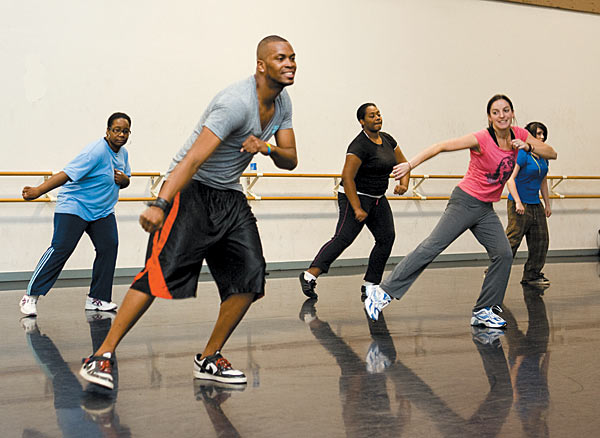 The selected dancers may have been really clean, not so clean but performed the crap out of it, had a lot of personal style, or were just fun to watch. There are so many reasons you can get chosen or not for a select group, so don't overthink it!If the choreographer calls out a "any 10 people" or "any 5 people" to be in a group, and you feel comfortable with the piece, you should volunteer to go up!
The selected dancers may have been really clean, not so clean but performed the crap out of it, had a lot of personal style, or were just fun to watch. There are so many reasons you can get chosen or not for a select group, so don't overthink it!If the choreographer calls out a "any 10 people" or "any 5 people" to be in a group, and you feel comfortable with the piece, you should volunteer to go up!
Recording class footage
Don't be surprised if someone (either the studio staff, another student, or a parent) is recording you dance.The studio sometimes does this to promote their classes, and students/parents often do this for personal keeping or to post on social media.. (let's be real) And if YOU want to record yourself, ALWAYS ask the choreographer first if that's okay. If they say no, don't. Clear it with the studio staff, too. Then ask someone to record you so you can critique (or appreciate) how you did. Or post it on Instagram. Live your life.
Choreographer's solo
At the very end of the class, the choreographer will most likely perform the piece. Honestly, the best thing to do here is just watch so put your phone down, and just watch!
Honestly, the best thing to do here is just watch so put your phone down, and just watch!
Saying thank you to the choreographer
Once you pick your jaw up from the dance floor, make sure to line up to thank the choreographer. They just shared their craft with you, hopefully in a way that helped you become a better dancer in some way, so it's important to show your appreciation. You can introduce yourself, say thank you, take a picture if you want. You can ask for critiques or tips, but if there is a long line of people behind you, the more polite thing to do is to keep it short and sweet. In addition, ask the choreographer for the song title and artist so you can keep practicing the piece at home!
Part 5: Setting Future Goals
So, you’ve made your first leaps into learning how to dance hip hop. Congrats! Welcome!! Yayyyyyy!!! Now, where do you go from here? Since different dancers dance for different reasons, let’s talk about 4 different goals you can set for yourself and tips to help you reach them.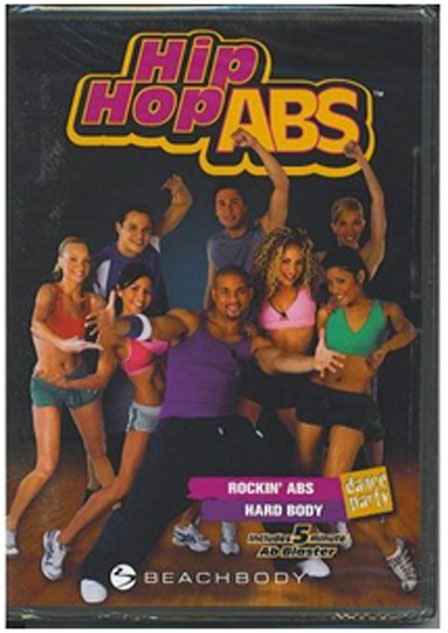
How did your first class go? Was it challenging? Scary? Too easy? Just hard enough? Although your first dance class is quite a hallmark in your dance journey, but it's only one of many to come. If versatility is your goal, keep exploring different classes at different studios. Don't just take the same beginner class from the same choreographer week after week. Make a list of specific styles or choreographers you want to train under. Schedule out when and where you can take those classes, and strategize a way to get the most variety as possible. After a while, you'll be able to identify what you need extra help in. And you'll have a better sense of your own "style," based on the types of pieces you tend to enjoy most.
#2: Level up! Learn advanced choreographyIf your goal is to be able to keep up with advanced choreography, then set a hard date for the class you want to be able to take in a few months. Til then, seek out classes that are more and more challenging as time goes on. From beginning classes, intermediate, to more advanced. And after you take it, don't stop there! Keep challenging yourself with advanced classes – while you continue to train as a beginner. It'll push your choreo pickup and execution, while strengthening your foundation. How To Get The Most Out Of Dance Class (Video)
Til then, seek out classes that are more and more challenging as time goes on. From beginning classes, intermediate, to more advanced. And after you take it, don't stop there! Keep challenging yourself with advanced classes – while you continue to train as a beginner. It'll push your choreo pickup and execution, while strengthening your foundation. How To Get The Most Out Of Dance Class (Video)
It's nice to have a tribe of support for something that started as a personal journey. So if you want to get to know your fellow dancers – take initiative! Introduce yourself to the familiar faces you see in class. Definitely introduce yourself to the studio staff. Be vocal in classes, and ask other dancers where they're from / where they're going. Not only that, attend dance shows, competitions, battles, and even team fundraisers. These events spur a lot of conversations, and give you a better vibe (aye) for what the culture is all about.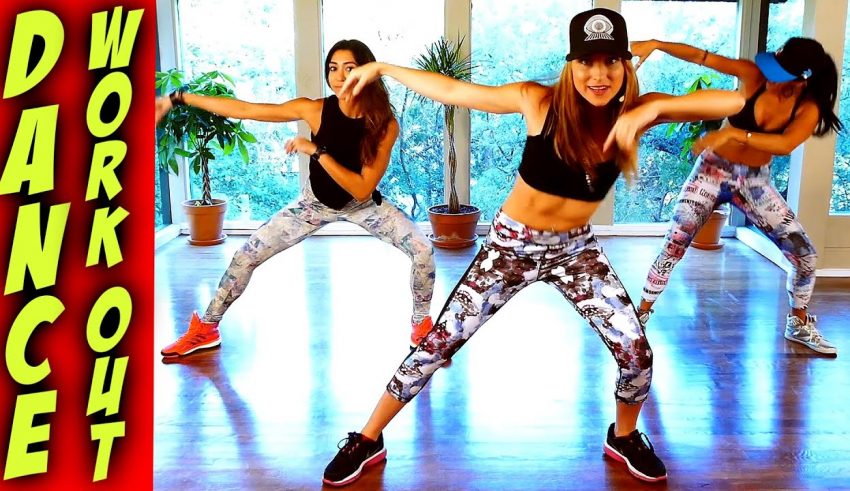
STEEZY Studio members connect with each other through our Facebook group – where we share videos, ask for tips, give critiques, and even arrange meet-ups!
See related articles: How To Thrive In A New Dance Community
How To Build A Network In The Dance Community
#4: Audition for a hip hop dance teamLots of us start dancing after watching a team perform. Whether it was on YouTube, or in person, these sets stirred something in us that pushed us to try it out. Consequently, a lot of dancers' goals are to perform with a team, on a stage, at a show or competition. If making it on to a team is your goal – and even if it isn't! – then auditioning is a great experience that can teach you a lot of things. It's going to call on you to pick up choreo quickly, in a crowded room, surrounded by other hungry dancers. You'll have to perform for a panel of judges, and maybe even freestyle.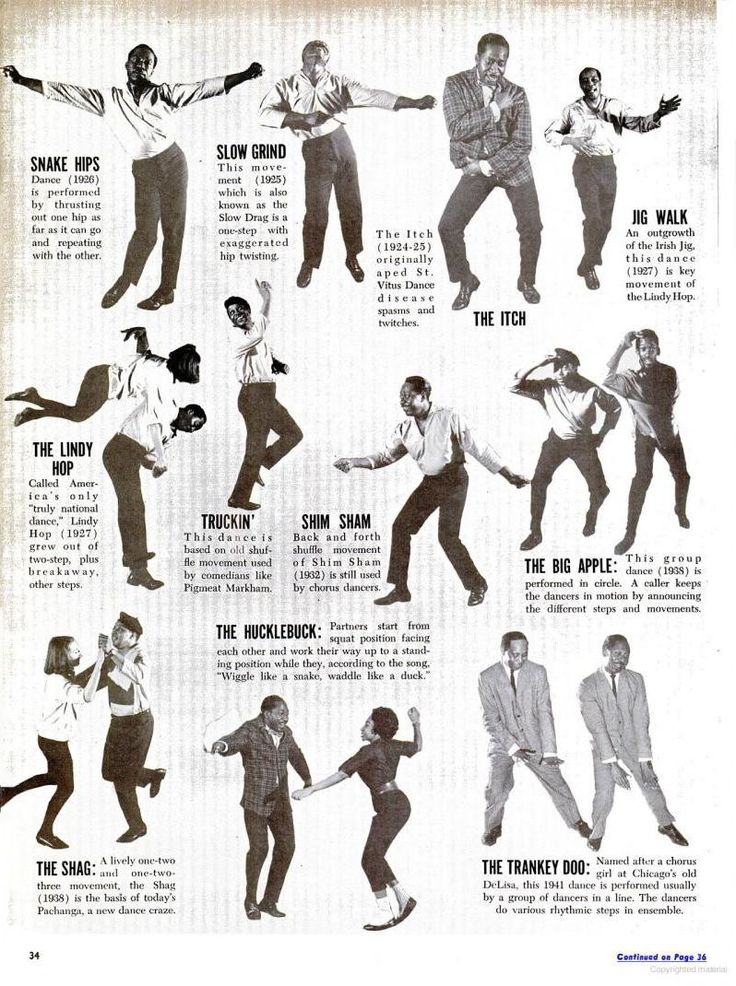
The pressure might get nerve-wracking, but that's exactly why that experience is so valuable. Auditioning for a hip hop dance team will really test where you are as a dancer, in addition to being another great opportunity to train and meet people. Look into the dance teams in your area. Ask about auditions or private / mid year auditions if you missed the start of the season. Even if you don't end up joining right away, it's great for the psyche to have a clear goal to aspire to.
See related articles: How To Make Your Dream Dance Team
We hope this helped you newer dancers learn how to dance hip hop! Welcome, and we can't wait to share this journey with you!
Fundamentals of body work and technique in HIP-HOP (practice)
1. development of mobility of individual parts of the body 2. isolation 3. balance 4. waving 5. rolls
3 levels of body work: 1 level - legs, 2 level - legs + arms, level 3 - legs + arms + body
The study of this topic begins as follows:
At the beginning, it is necessary to analyze in detail with the students all the main parts of the body:
head, shoulders, chest, body, elbows, hands , pelvis, knees, feet.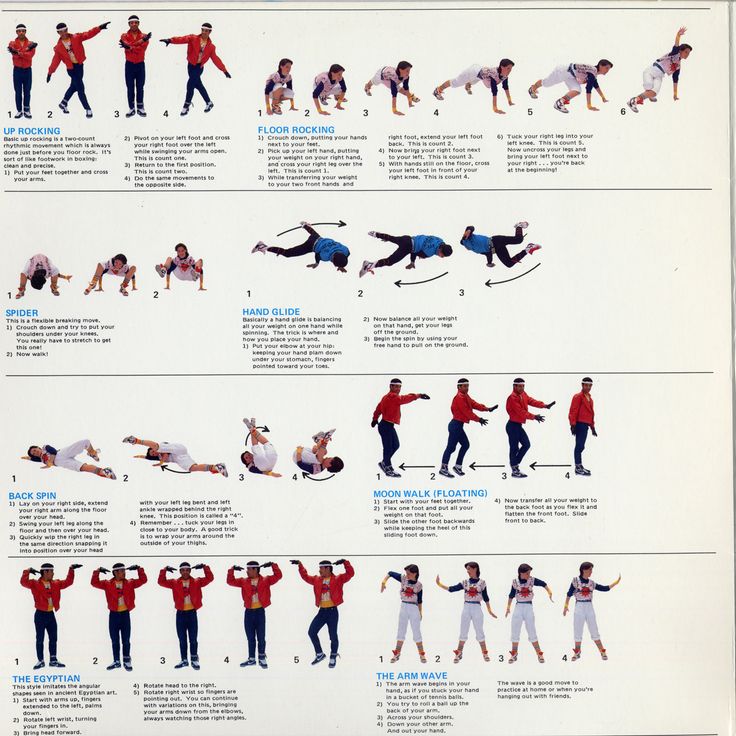
We take each part of the body and analyze circular movements, thereby warming them up a little.
Next, go to the first stage.
Stage 1 - development of the feeling of pumping in every part of the body.
Essence of the stage: to learn how to hold the swing in a certain part. First, we do it locally. Next, add simple steps. Next, add the hands.
According to this logic, we work out each part of the body. As a result, the student will eventually begin to feel the swing not only in the whole body, but also in separate parts, which will allow him to keep the rhythm in almost any position.
The final exercise is to switch the swing between each part of the body during freestyle.
This set of exercises can be completed within 30-40 minutes of the lesson and also repeated and returned to this topic in subsequent lessons.
Over time (after one or more lessons) you can complicate and move on to the second stage.
Stage 2 - freestyle of each part of the body.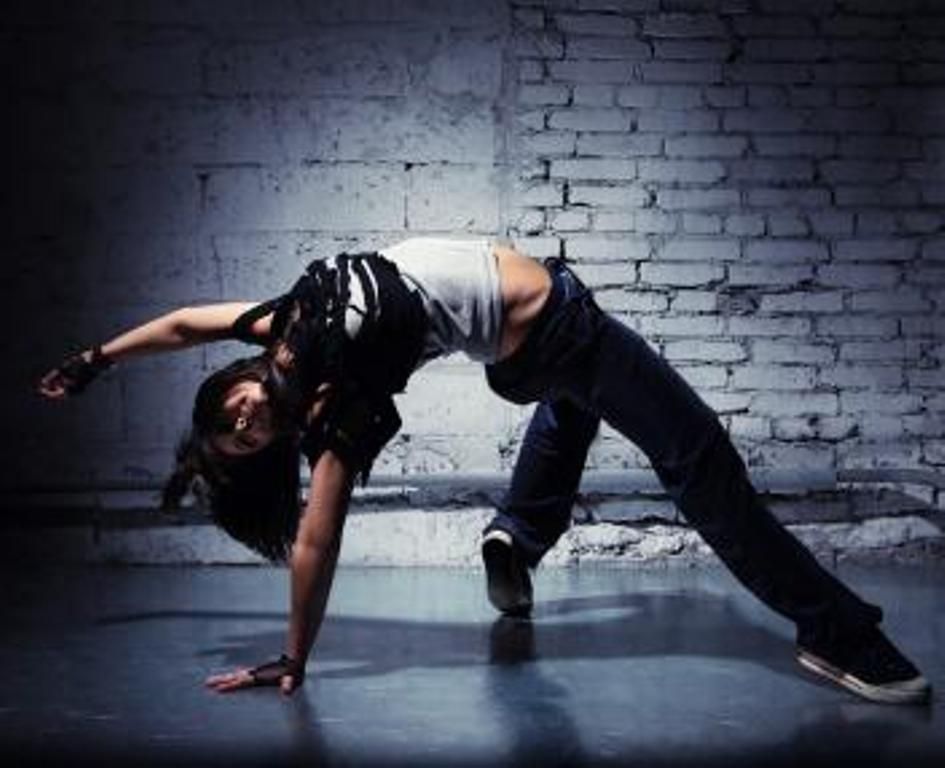
For this you can use exercise - drawing. Essence: each part of the body seems to draw certain figures. Figure-eights, geometric figures, and in general the very concept of “drawing” in space are suitable here.
We act according to the same strategy as before:
-we work on each part separately. We take each part and draw with it (first in place, then with steps)
- switch between different parts of the body (first in place, then with steps)
Also a little later (or simultaneously with the second stage) you can capture the theme of rolls.
These are more intense circular movements in different directions and in different alternations to the music.
For this, it is very easy to remember the concept of hands "hoop". Students tend to grasp the idea quickly.
We move according to the standard logic:
- work through each part separately: make a roll with each part of the body (first in place, then with steps)
- switch between different parts of the body (first in place, then with steps)
This way the student will be able to feel the individual elements of the body and develop basic control.
Stage 3 - Waving.
From this topic we take the basic waves: arms, body, combined.
If arms, then (hand, elbow, shoulder, shoulder, elbow, hand)
Advanced (fingers, goose, hand, elbow, shoulder, chest, shoulder, elbow, hand, goose, fingers)
If body, then (head, shoulders, chest, pelvis, pelvis, chest, shoulders, head)
First we train on the spot. Then we perform the waves with the swing in place. Next, add simple steps, save the quality and make waves.
Stage 4 - Insulation.
One of the most difficult stages. Therefore, it is the last one.
Understanding basic isolation movements, such as:
-Separate body turns (head, body, legs)
- Head/shoulder ratio (head down, shoulders behind them)
- Chest, pelvis isolation
Of course you can add more. Everything is at the discretion of the teacher.
Processing occurs according to the same logic as before.
We do every type of insulation on site.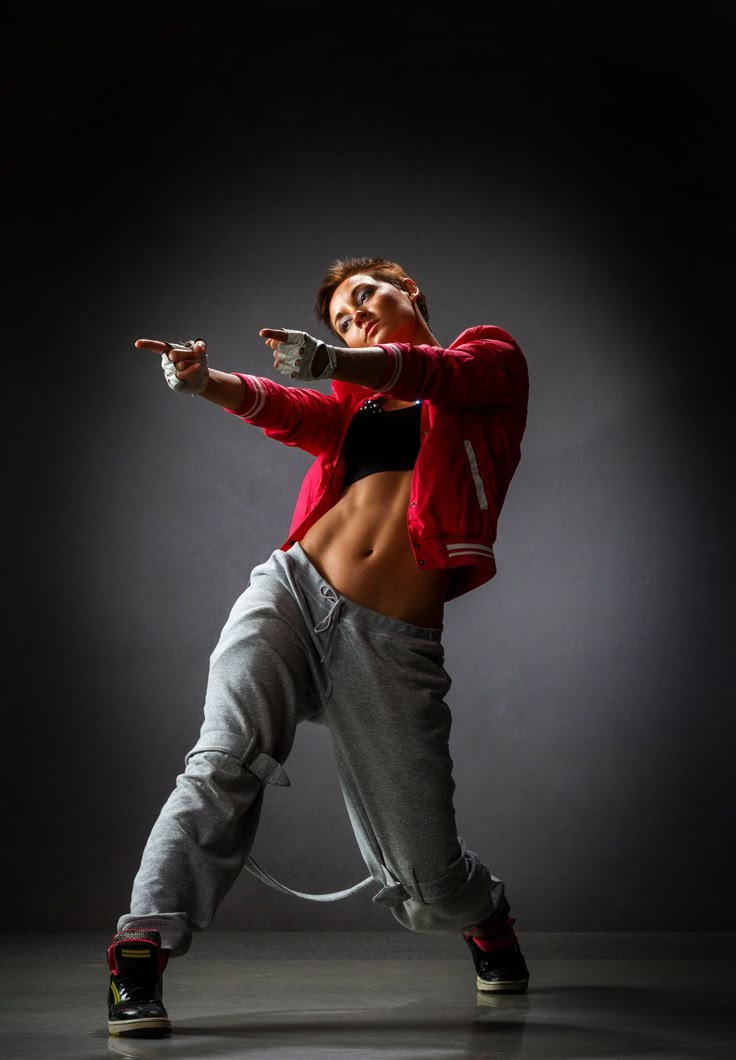 We do on the spot with every type of insulation. We do with steps and with each type of insulation.
We do on the spot with every type of insulation. We do with steps and with each type of insulation.
As the final stage of this entire block, you can “glue” all the stages on the basis of freestyle.
i.e. the student is given the task to freestyle and during the dance to perform either a swing in separate parts of the body, then drawing with a separate part of the body, then rolls with a separate part of the body. And all these transitions should be glued together by waving.
Hip-Hop (practice)
From the very beginning it is worth understanding the laws of writing most music.
Rhythm is the alternation of strong and weak parts in music, if we talk about the main score. 8 accounts is the “eight”, and 4 “eights” is the “square”.
- Time signature dance
We put the guys in pairs or a circle. We set the condition: every freestyle, but only for a certain time (a certain time signature).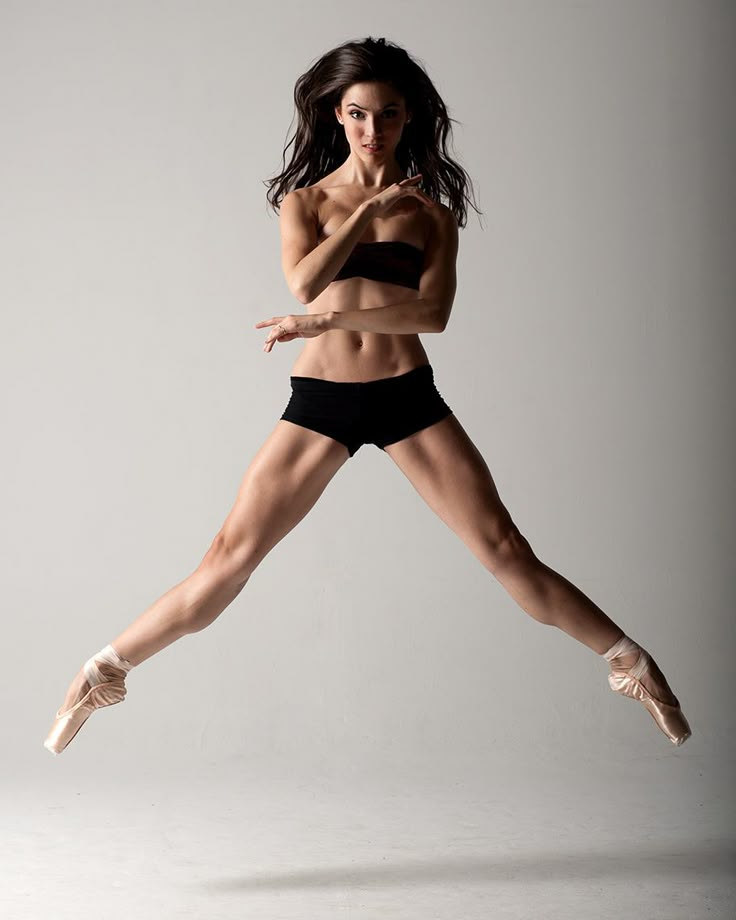 As soon as the size comes to an end, the next one must leave and enter.
As soon as the size comes to an end, the next one must leave and enter.
We dance:
- by squares - by 2 eights - by 1 eight - by 4 accounts - by 2 accounts - by 1 account.
- Movement to count
Children can stand in any place. I give everyone a specific account number. If there are a lot of guys, you can give several the same number.
Further, their task is to make the movement only at their own expense.
i.e. I turn on the track, we begin to silently count in eights and everyone must make a movement in their own account.
Next, you can talk about patterns. For example, about the fact that at the end of each square or the second "eight" there is usually some kind of sound.
This is also convenient to show on the diagram.
Music does not need to be caught or predicted. It can be easily remembered. Understand its pattern.
- Rhythm Pattern Variations
Having dealt with the basic rhythm and structure of music, you can delve into the topic of rhythm and beat variations.
At this stage, you can analyze all possible basic variants of rhythmic patterns based on the main rhythm, which can be universal.
Examples:
1. One and two, three and four 2. One, two, three and four 3. One and two, three, four 4. One, two, pause, four 5. And one, and two, three and four 6. One, "pause", three and four
7. One, two, three, four... The list of these variations can be continued for a long time.
When all the basic information on the study of the basic rhythm of the students subsided, you can proceed to the analysis of music in terms of character, mood, vibe.
The main objective of this paragraph is to teach the student to independently analyze music and build his dance in relation to it. To do this, we tell students about the “box system”.
The box system is a small game in which the student has to “put” a track into one or another box depending on its character and build a dance relative to the rules of the box.
We select the basic 5 boxes - Old School, New School, Beats, Deep, Chill.
It can be noted that all the boxes are as conditional as possible and the main task of this system is to teach you how to analyze tracks, classify and build your dance in relation to the nature and type of music.
"Old School" - old school tracks. A bright distinguishing feature: rhythm (and one, and two, and three, and four ...), reading, a certain speed (from 130 bpm)
If the track flies into this box, then the dance is built mainly from the base. The condition of the ball will do.
Old School playlist
"New School" is a more modern take on hip-hop music. A bright distinguishing feature: triplets (rhythms with three beats), slower speed (up to 130 bpm)
If the track flies this box, then I suggest that students use a faster bounce, as well as add a "breakaway" state - jumping, gesticulating, strength , emotions.
Playlist with New School tracks
"Beats" - electronic version of hip-hop music. A bright distinguishing feature: a lot of sounds, no vocals (as a rule).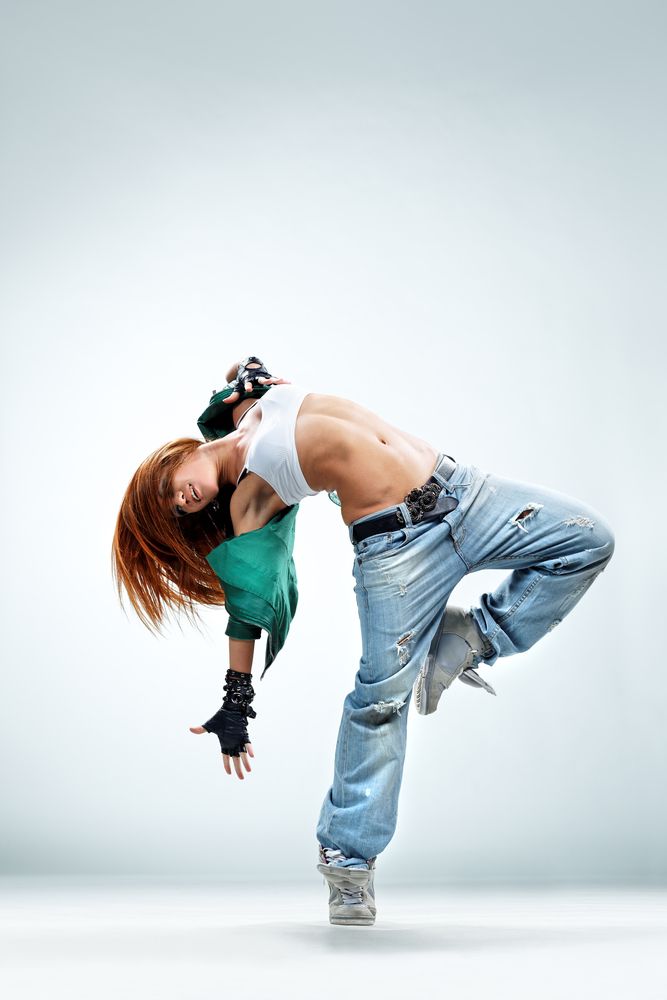
If the track flies this box, then the dance is built more from the technical moments (body and speed control). This is justified by the fact that such tracks are often written specifically for dancers and contain more rhythmic patterns of different instruments.
Such tracks are a kind of challenge for the dancer and his body control.
Playlist with Beats tracks
"Deep" is also a version of electronic music. A striking distinguishing feature: deaf, voluminous musical elements (associations with the ocean floor)
If the track flies into this box, then the dance can be built more from the flow (flow). The state of the wind or the curtain will do.
Playlist with Deep tracks
"Chill" (or soul) - soulful tracks. Usually a pleasant female voice sounds, and the music makes you want to snap your fingers.
If the track flies into this box, then students are invited to build a dance from the feeling of high, turn on more groove and just enjoy the music without complicating and speeding up the dance in terms of volume of material and strength.